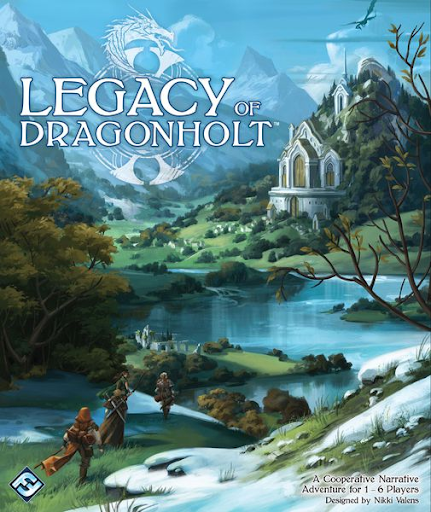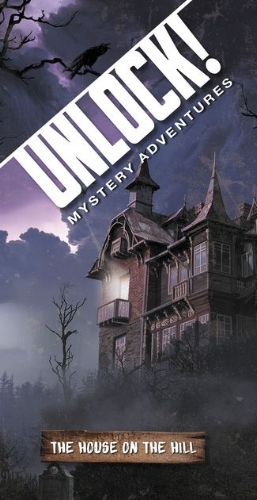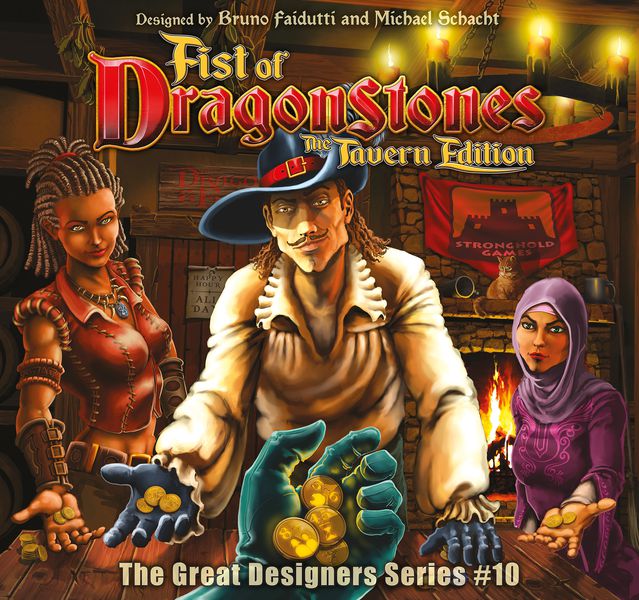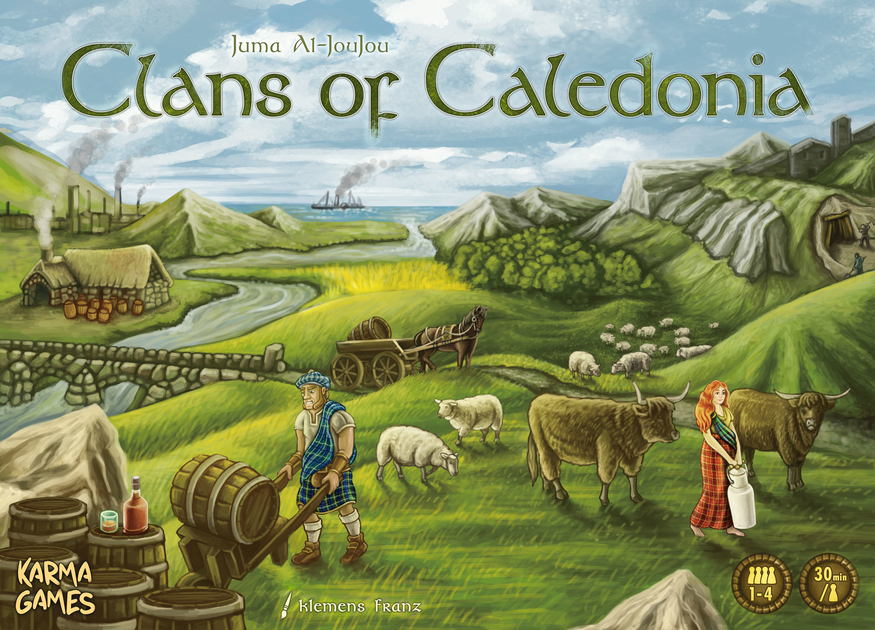Tower of Madness
Published by Smirk and Dagger Games - 2018
Designer: Curt Covert
Head Artists: EJ Dela Cruz, Gunship Revolution, Jen Santos, Brian Valeza
2 - 5 players ~ 30 - 45 minutes
Review “When The Marbles Hit The Floor” written by Luke Muench
I was never a child who had the opportunity to play Kerplunk. I certainly participated in many of the other childhood board games; Parcheesi, Battleship, Candyland, Monopoly, Scrabble, Yahtzee, and so on. Kerplunk was just one of those titles that I never had the chance to try, at least not in a memorable way. And, frankly, I doubt I would have enjoyed it much as a kid; marbles, to me, seemed silly and ridiculous, and I couldn't fathom why people collected them or played with them on the daily. No, Pokemon and Yu-Gi-Oh were where it was at, and anyone who thought otherwise clearly couldn’t understand the brilliance of those games.
Fast forward to a few months ago, and a title by the name of Tower of Madness was brought to my attention, a game previously named “Ker-thulhu” before being changed for licensing purposes. A “gamers” version of Kerplunk with a Cthulhu theme slapped on it? Not my bag, I thought; I’ve never been one for lighter experiences. Yet the buzz and hype surrounding the title piqued my interest and made me wonder; was I too quick to judge? What magic might hide within this tall perilous tower? And would I find fun held within its walls, or would I just go mad and, as the tagline goes, lose my marbles?
Disclaimer: Tower of Madness was provided by head designer Curt Covert, who I interviewed recently regarding his company, this game, and much more.
Spooky Slimy Tentacles
“They'll smile and scrabble slowly by and drive you so insane.” - Andrew Gold
Tower of Madness has all the makings of your classic Kerplunk experience, but with subtle twists intermingled. Sure, you pull sticks, this time very well made and stylish tentacles, from a tower, causing marbles to tumble to the bottom and eventually resulting in the end of the game, but when you can pull tentacles and which marbles you actually want to gather can make for some interesting situations.
Players may either play with or without special abilities, granting slight buffs or passive effects that can help them fend off the influences of Cthulhu, so long as they remain sane.
Each round, a location card is revealed, indicating a global rule that lasts for the round. On each player’s turn, they roll 5 dice; in order to successfully interact with that location, they must get a 1, 2, and 3. The last 2 dice compose a player’s discovery total, which will allow them to win the location for points, assuming they are the last player to roll the highest value obtained that round.
Additionally, if a player rolls exactly two 5’s on one of their rolls, they will be able to take 1 of 5 powers, which can be used later that round. These may allow you to reroll your dice, give away madness, or prevent someone from pulling a tentacle.
Each roll, players are forced to keep at least 1 die, potentially limiting a player’s options slowly but surely, giving them a creeping feeling of dread as they begin to realize they have no chance of rolling that 1-2-3 set. If this ends up being the case, they are forced to pull a tentacle from the tower, possibly dooming them, and the table, with the various effects of the marbles:
Blue marbles, when collected, are worth 3 points each at the end of the game, adding to your score value.
White marbles allow players to draw magic spells, which can do 1 of 2 effects depending on whether the player is mad or sane.
Red marbles cause players to accumulate madness; if a player collects 4, they have been driven insane.
Green marbles represent the doom of the universe. If all 3 are pulled, the game ends, as Cthulhu has risen!
Magic spells can be used on your turn and are either take-that effects or self-preservation effects that can be played at moments specified on the card. Depending on whether you are sane or mad, they will do 1 of 2 effects, with the mad side leaner towards more take-that elements.
If you are driven insane by way of red marbles, your objective changes in the game. You are now a cultist, bent on bringing about the apocalypse. You no longer roll any dice, and instead must always remove a tentacle from the tower on your turn. Your goal, and only way to win, is to be the person to pull the person who pulls and releases the last green marble from the tower.
The game ends when either all locations have been successfully navigated or the final doom token has fallen from the tower. Given that the marbles are totally unpredictable, the length of game can be pretty unpredictable, though most games will end after 35 minutes or so.
Building Madness
“I became insane, with long intervals of horrible sanity.” - Edgar Allen Poe
While the experience may be simple enough, putting it together is not. The illustrious tower can be a bit of a bear to wrestle with, especially the first time you assemble this ominous totem. Don’t get me wrong, the components are very well made (the production quality of this game is rather high), but it can feel a little frustrating to try and get it all to hold together well. Each tentacle has to be inserted in a specific manner, then the marbles need to be carefully laid in the bed on top, but most maddeningly, the roof needs to be placed over the top so players can’t see what’s happening within. While the tower itself has a strong magnet to hold it closed, the roof has a much smaller, flimsier magnet that doesn’t quite line up with the other half, resulting in the roof potentially pushing the tower open again, leading to falling marbles and frantically trying to push the tower closed once more.
Additionally, you have to act carefully when sitting near the game, for a slight nudge can cause marbles to tumble from the tower, potentially resulting in the premature end of the game. I’ve had at least one game end in me and the other players going “... well, that’s it I guess,” which sucks considering the set-up time and slow build up of tension over the course of the game.
When everything is pulled together, though, this game and its device can work like a charm, with such beautiful aesthetics and finely crafted components. Well, except for the location cards. For some reason, the location cards were poorly cut in my copy of the game, with bumps running up and down the deck in a noticeable manner. This may be an issue specific to my copy can be fixed with the careful use of a knife or scissors, but it's a surprising oversight considering the overall package.
Tick Tock, Tick Tock
“I suppose it’s like the ticking crocodile, isn’t it? Time is chasing after us all.” - J.M. Barrie
I think Tower of Madness suffers most when directly compared to Kerplunk, but it’s hard to escape it, consider the game’s history and nature. Kerplunk was, at its core, a very quick, easy game for younger audiences to simulate the same feelings as Jenga, taking only a few minutes to complete. Tower of Madness, however, takes significantly longer, and players can start to feel it after the first few rounds.
Not that length is inherently bad, some people enjoy longer games with novelty concepts, others despise them, I’ve played Tower of Madness with with both. On the one hand, there are those players, like myself, who quickly just wanted to watch the world burn and made it their sole goal to bring about the end of the world. Part of that can be attributed to being rebellious or liking the idea of going against the grain, but another part of it is how much downtime there is between turns. Due to the process of passing the dice, rolling it up to 5 times, potentially pulling a tentacle, and resolving the effects of various spell cards, turns can take a significant chunk of time, which wouldn’t be so bad if players had anything to do or think about on their turn. But, being a press-your-luck style game, there’s next to no planning turn-to-turn, leaving players twiddling their thumbs until they watch excitedly as the next tentacle is pulled.
Similarly, some players just really wanted to pull tentacles. Regardless of the intent, they wanted to have the physical experience of pulling the sticks from the tower and watching the marbles roll as they did in their youth, fueling a sense of nostalgia as well as being an agent of chaos. This can result in players throwing their turns to intentionally go mad and get to what they find to be the fun part of the game, which I can respect. It can be frustrating when you’re playing a game that outright tells you that you can’t do the fun part of the game yet, that you shouldn’t want to do that thing because it won’t earn you points, and that, if you roll well, you might never have the chance to do that thing.
On the flipside, there are definitely those who found the longer, more involved experience more fun and engaging, with the chaos and randomness that Smirk and Dagger games are known for bringing about exciting, silly, and generally raucous moments. Players might intentionally force other players to reroll their dice or just barely get a better discovery roll than the last player, leading to exclamations and laughter throughout the group. When there are moments, the entire table feels it and reacts in some manner, whether it be excitement or annoyance or anticipation. If you can invest yourself in it, Tower of Madness can and will be a ton of fun, providing a specific experience that you can’t find elsewhere right now, and the time that it takes to commit to it can add to that investment.
Who’s Crazy For It?
“I remember when, I remember, I remember when I lost my mind. There was something so pleasant about that place.” - Gnarls Barkley
Like with many Smirk and Dagger games, it comes down to how willing you are to let your guard down and pay less attention to the score and more attention to the silliness Tower of Madness enables. It’s light, goofy fun that took GenCon by storm and has been one of the most talked about games in the industry as of late, and for good reason.
Is it for a gamer like me, who values thoughtful strategy and outwitting his opponents? Not at all, but I’m not the game’s audience by any means, and it’s clear to me that when this game works, it nails it. So if this sounds like a fun time to you, give it a shot. Go on. Pull a tentacle. Embrace the madness.
Who Should Get This Game: If you’re looking for a less demanding dexterity game that fuels your need for Cthulhu and silliness, this is your jam.
Who Shouldn’t Get This Game: Long set-up times, long wait times between turns, and little strategy may turn you off this endeavor.
A review copy of Tower of Madness was provided the publisher, Smirk & Dagger.
Other Recent Written Reviews




































